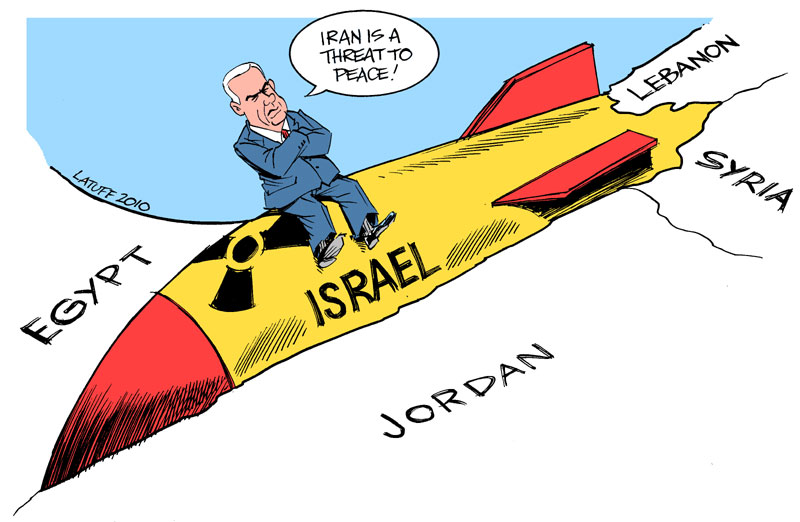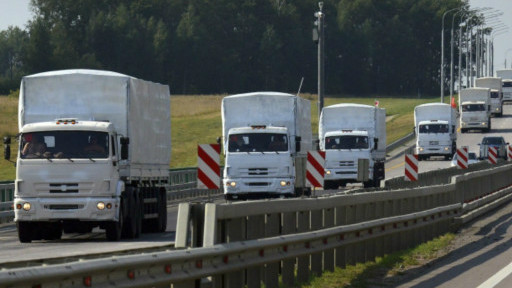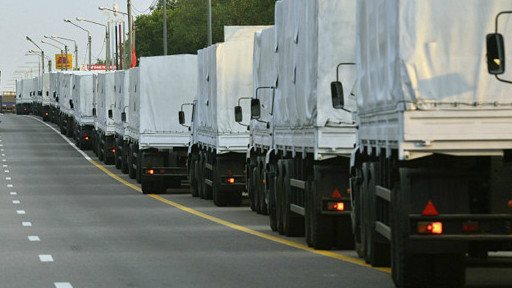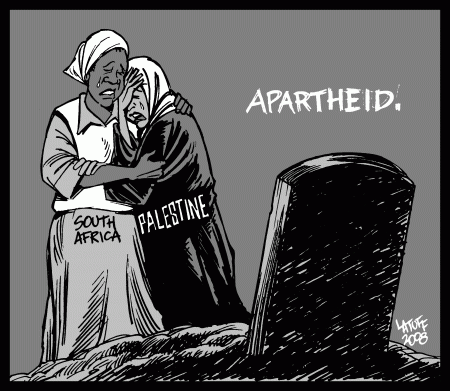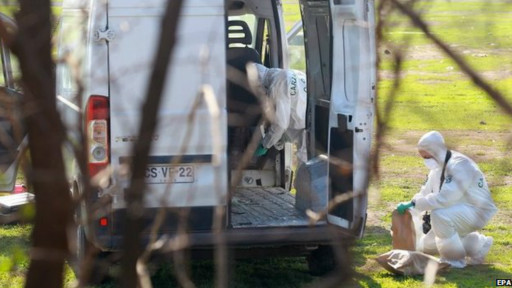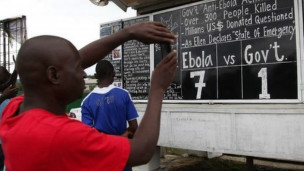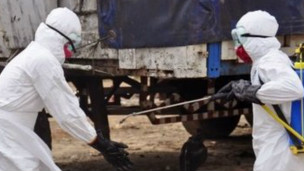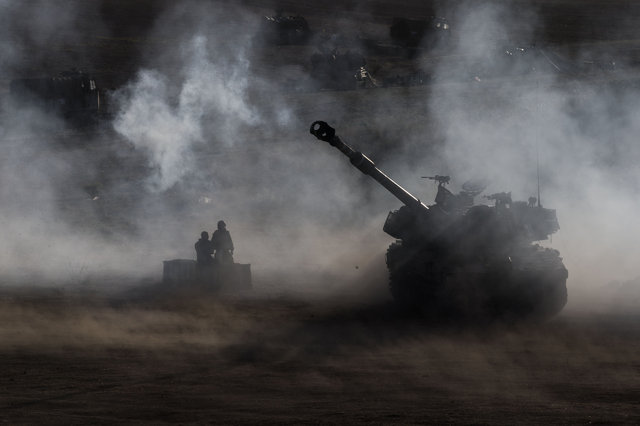Israel and Hamas are at war in the Gaza Strip.
Hamas is firing rockets into Israel, Israel has been launching
airstrikes against Hamas, and, on Thursday, Israel announced it will
launch a ground invasion. The violence is dominating headlines
internationally. But there's a ton of backstory that's necessary to
understand what's happening, both in the day-to-day conflict and the
bigger picture. What is Hamas, really, and what does it want? What is
Gaza, and does Israel control it?
In order to give you a better sense of what's actually happening in
the Israeli-Palestinian conflict, here are 11 basic but critical facts
you need to know to understand what's going on in Gaza today.
1) The Gaza Strip used to be part of Egypt, and is totally separate from the West Bank

Orlovic/Wikimedia Commons
As you can see on the above map, Gaza is separate from the other
major Palestinian population center — the big green blob to the east of
Israel, the West Bank. So despite both territories being largely
populated by Palestinians, they're basically separate geographic
entities.
Before Israel occupied Gaza, it was controlled for some years by
Egypt, which borders Gaza on the west. Israel took it from Egypt during
the 1967 war between the two countries, and until 2005 it occupied the
Gaza Strip in the same way that it has occupied the West Bank through today.
2) Gaza City is among the most densely populated places in the world
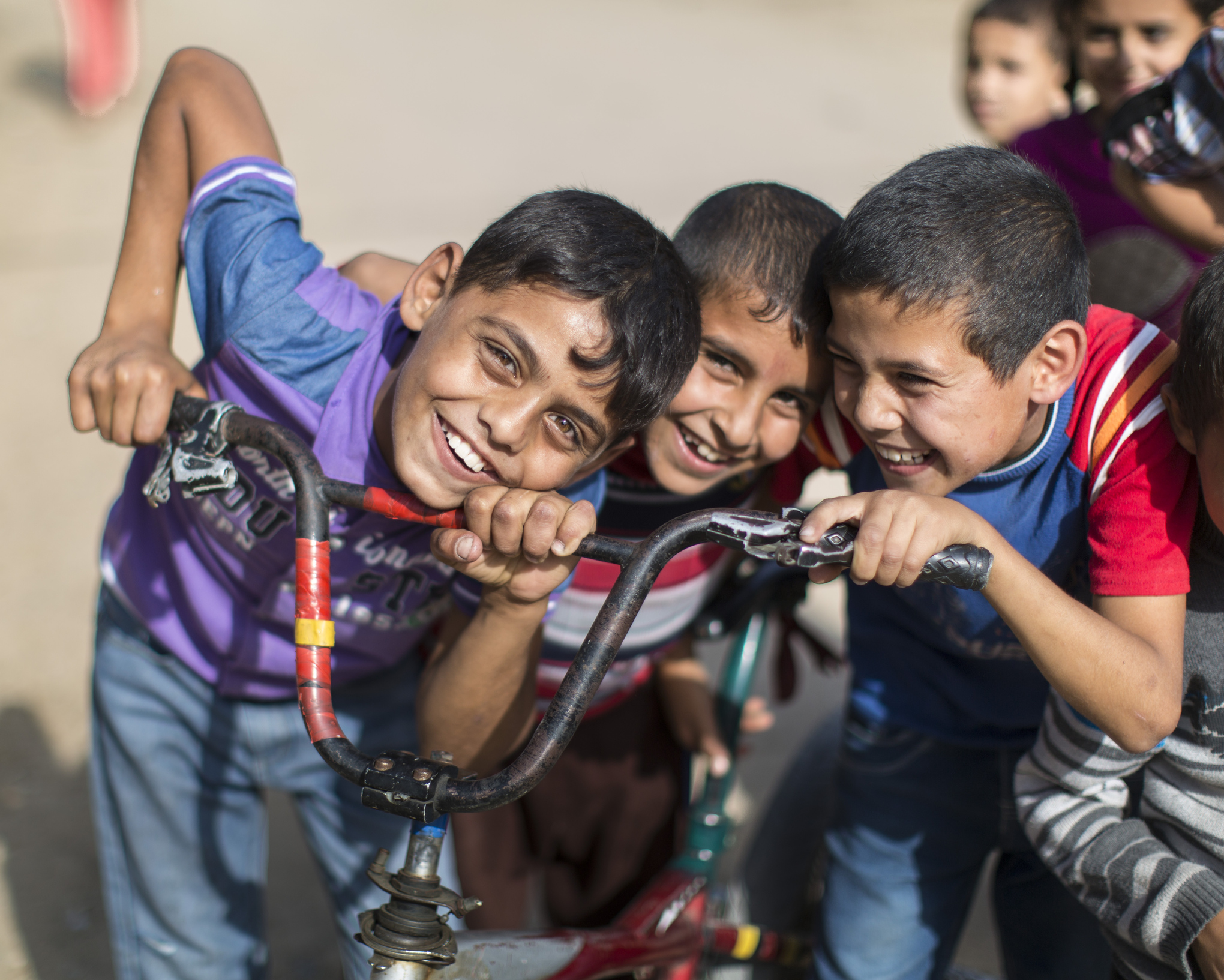
Thomas Imo/Photothek/Getty Images
The Gaza Strip is 146 square miles, and has a population of about 1.6
million. That's a lot of people in a very small area. For perspective,
Philadelphia is about 142 square miles and has about 1.5 million
citizens. In other words, the entire Gaza Strip is basically as dense as
a major American city.
According to data complied
by the Washington Post's Adam Taylor, Gaza City, the largest population
center in the Strip, is the 40th most densely populated urban area in
the world, putting it on par with some Asian mega-cities.
This matters for the current conflict, because it makes it very hard
for Israel to bomb from the air without hitting civilians. Hamas also
places rocket emplacements inside civilian population centers, so
Israeli aerial offensives inside Gaza are basically guaranteed to kill
lots of non-combatants no matter how much Israel attempts to avoid it.
3) Israel used to have troops and settlers inside Gaza

Israeli soldiers and settlers during withdrawal. Marco Di Lauro/Getty Images
Until 2005, Israel occupied Gaza in the same way that it occupied the West Bank. That included Israeli military bases and settlements, communities of Jews living inside Palestinian territory.
In 2005, Israeli Prime Minister Ariel Sharon decided to withdraw from
Gaza. Sharon, a longtime hawk and skeptic of Palestinian independence,
had concluded that the Israeli occupation was no longer in Israel's
interest. Sharon withdrew Israeli outposts and uprooted about 10,000
settlers. It was a hugely controversial move inside Israel, particularly
on the political right — the current Israeli Prime Minister, Benjamin
Netanyahu, quit the government in protest.
Sharon left control of Gaza to a united Palestinian Authority,
governed by the moderate Fatah party from Ramallah, in the West Bank.
But that's not actually how things worked out — Hamas quickly became the
dominant power in Gaza. That means that Palestinians in Gaza aren't
just physically separated form those in the West Bank, they're governed
separately as well.
4) Hamas is part of an international Islamist movement and doesn't recognize Israel

Gazans celebrate the Muslim Brotherhood's victory in 2012 Egyptian election. Mahmud Hams/AFP/Getty Images
Hamas is, according to its charter, the Palestinian branch of the
Muslim Brotherhood — an Islamist group that operates around the Muslim
world, and one that nominally ran the Egyptian government for about a
year recently. Hamas isn't controlled by the Egypt-based brotherhood
leadership, but they have close ties. Unlike many Brotherhood branches,
though, Hamas also has a militant wing: the Izz ad-Din al-Qassam
Brigades.
Since Hamas' 1987 founding, it has waged war on Israel, most notably
through suicide bombings and rocket attacks. It seeks to replace Israel
with a Palestinian state, and has repeatedly refused to recognize Israel
(though it has a proposed a long-term truce if Israel agrees to
withdraw from the West Bank). Some Hamas leaders have suggested that
they would be satisfied with a Palestinian state on the West Bank and
Gaza, but it's not at all clear whether they'd be able or willing to
hammer out a deal with Israel in practice — assuming Israel was even
willing to sit down with them, which is doubtful.
Hamas and Israel's long history of antagonism — Hamas conducted a
significant number of suicide bombings inside Israel during the early
2000s — is a major contributor to the current crisis.
Hamas and Israel refuse to negotiate openly and directly, and neither
trusts the other even a little bit. As such, even small provocations
have the potential to escalate rapidly.
5) Hamas was democratically elected by Palestinians
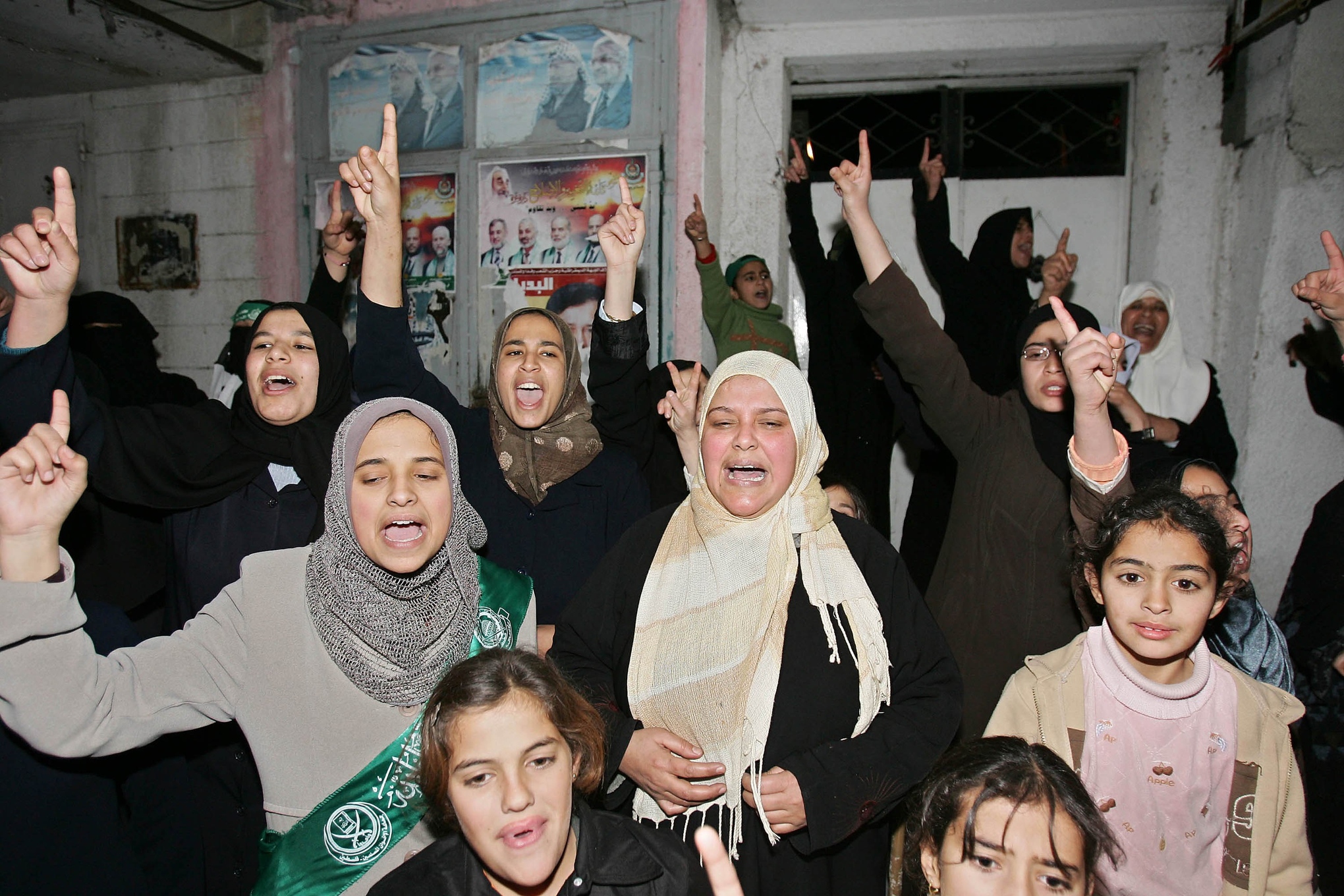
Palestinians celebrate Hamas' victory in 2006. Abid Katib/Getty Images
Hamas sees itself as the representative of the Palestinian people — and, in a sense, they're not totally wrong.
Prodded by the George W. Bush administration, the Palestinian Authority
held popular elections across the West Bank and Gaza for the
Palestinian legislature in 2006. Hamas won a slight majority.
However, Hamas refused to recognize Israel or respect past
Palestinian agreements with Israel while in government. Hamas fought a
pretty bloody civil war with
the more moderate Fatah party over this and de facto seceded from the
PA to govern Gaza independently from the West Bank-based leadership.
Today, Hamas and Fatah are closer to reconciling than they've ever
been. They signed a agreement to both support an interim government in
April, and have agreed to hold national elections in Gaza and the West
Bank sometime in the next five months. However, Hamas and Fatah disagree
deeply about the current conflict. Hamas has been firing rockets at
Israel, while Fatah urges a halt to hostilities. It's not clear whether
the joint government can survive the current round of fighting.
6) Hamas isn't the only militant group in the Gaza strip, and they've all shot rockets into Israel
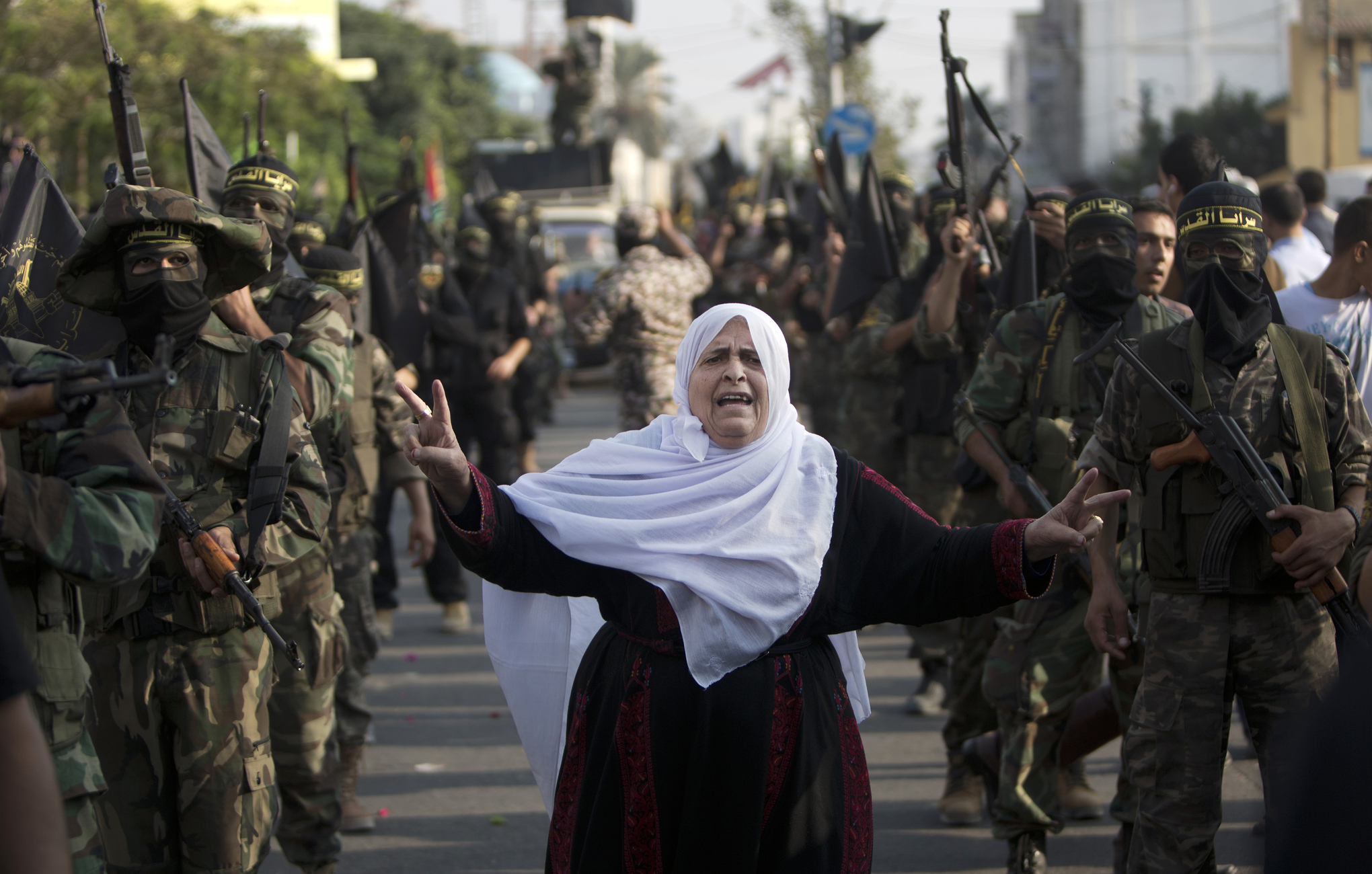
Islamic Jihad parade. Mahmud Hams/AFP/Getty Images
There are other militant groups in Gaza, most notably Palestinian
Islamic Jihad. These groups are even more radical than Hamas and are
wholly committed to violence rather than to politics as the main tactic
in their struggle with Israel.
Since the Israeli withdrawal in 2005, Hamas and these other groups
have launched thousands of rockets and mortars out of Gaza into Israel.
This rocket fire rarely causes casualties, but it makes life miserable
for Israelis who live within range. The drumbeat of rocket fire destroys
Israeli homes and forces people to scramble and hide when sirens sound.
It's lessened recently, but it's one of Israel's most significant
grievances with the Hamas leadership.
Because Israel holds Hamas responsible for all rocket fire from Gaza,
including from other Palestinian groups, sometimes Hamas gets sucked
into violent flare-ups that it's trying to avoid
. So the non-Hamas groups in Gaza help push the already-militant Hamas toward conflict with Israel.
7) Israel blockades Gaza, which creates a humanitarian crisis
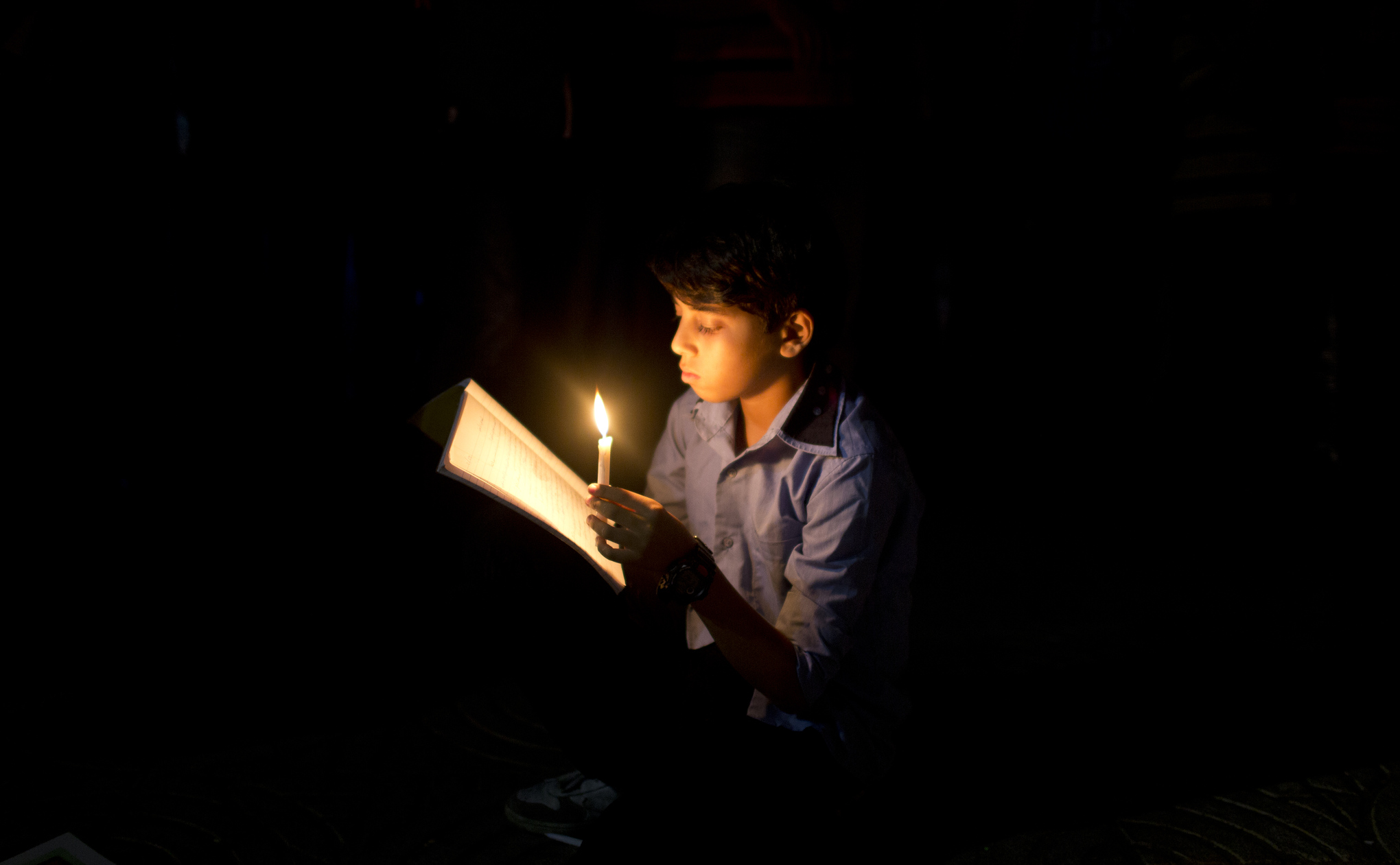
Mahmud Hams/AFP/Getty Images
Since 2007, Israel has maintained a blockade of Gaza. It severely
restricts all border crossings in territory it controls and naval
pathways into the Strip. The blockade restricts access to food, water,
electricity, gas, construction materials, and other necessities. It's
not that Israel doesn't let
any of those things into Gaza; it's that it bans many products and regulates the flow of others pretty tightly.
The stated goal of the blockade, which Israel has loosened recently,
is to prevent Hamas from getting what it needs to build rockets and
mortars that could hit Israel, and rocket fire has diminished. However,
it's clear that another key purpose of the blockade is to weaken Hamas
politically. Limiting access to goods, the theory goes, should either
cause Palestinians to shift their support to a more moderate faction or
force Hamas itself to moderate.
This causes a lot of suffering among Gaza's civilians. According to
Oxfam, the blockade "has devastated Gaza's economy, left most people
unable to leave Gaza, restricted people from essential services such as
healthcare and education, and cut Palestinians off from each other."
Oxfam has numbers to back that up:
More than 40% of people in Gaza - nearly 50% of youth - are now
unemployed and 80% of people receive international aid. Many key
industries, such as the construction industry, have been decimated as
essential materials are not allowed into Gaza. Exports are currently at
less than 3% of their pre-blockade levels, with the transfer of
agricultural produce and other goods to the West Bank and exports to
Israel entirely banned.
8) Israel and Hamas have fought multiple wars over Gaza
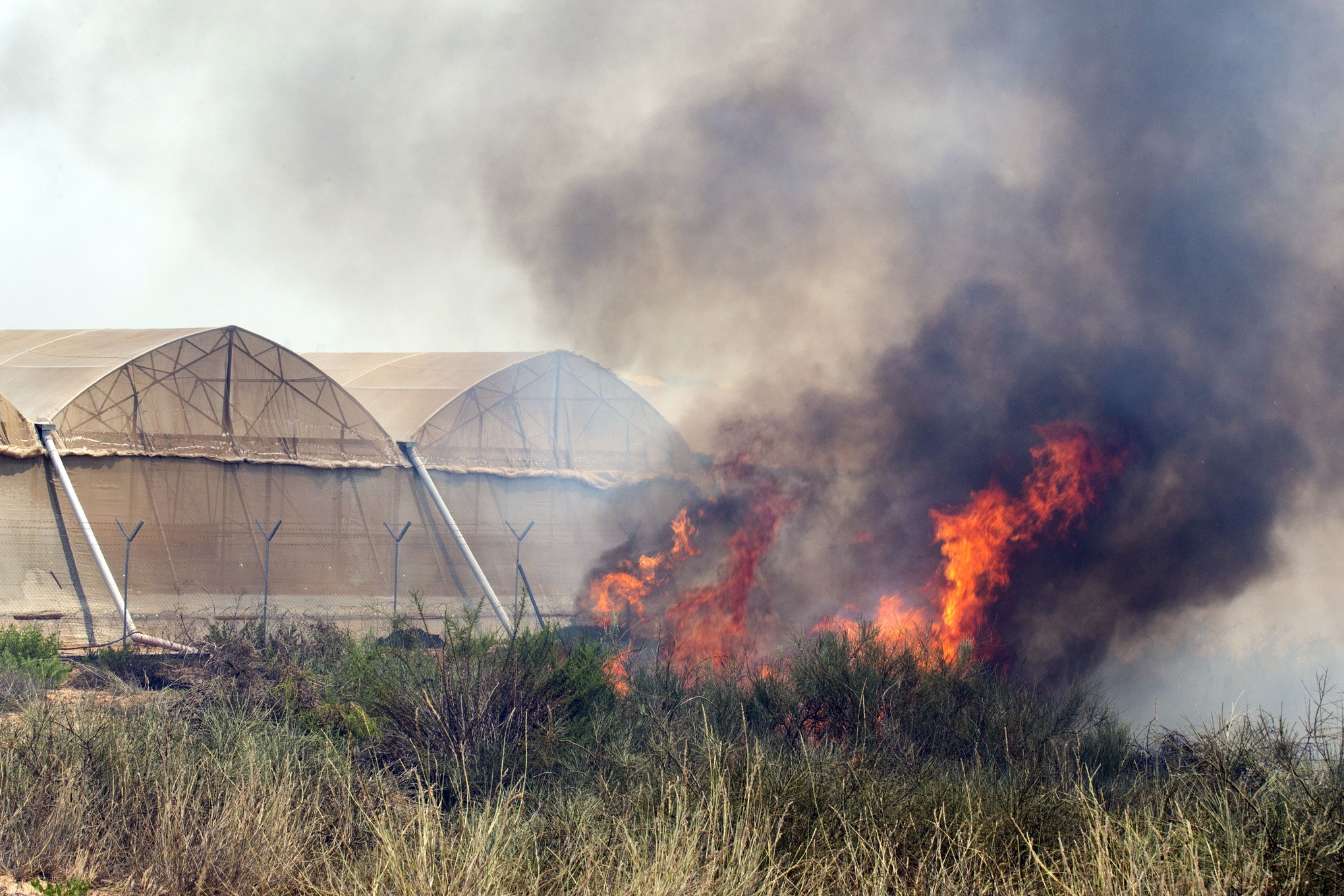
Jack Guez/AFP/Getty Images
Since Israel's 2005 disengagement, Israel and Hamas have fought three
separate wars: in 2006, in 2008-9, and in 2012; Israel invaded Gaza in
the first two but only bombed in the third. The 2006 war was triggered
by Hamas kidnapping a young Israeli soldier, much as the current crisis
was triggered
by the kidnapping and murder in the West Bank of three Israeli
students. They were killed by men who Israel believes were Hamas
operatives.
Israel's stated goal in the 2008-2009 and 2012 war, which Israel
respectively calls Operation Cast Lead and Operation Pillar of Defense,
was to destroy Hamas' ability to launch rockets into Israel. The
strategy was to destroy Hamas' rocket stock and supply lines as well as
to deter future Hamas rocket attacks.
Since Hamas rocket attacks seriously declined after 2012, there's a
case that Israel's strategy succeeded. However, it came at a serious
cost in Palestinian lives. As the chart below shows, casualties in the
conflict — almost entirely Palestinian — spiked during the 2008-9 and
2012 hostilities:

Israeli officials said the air strikes were designed in part to once
again put a break on rocket fire. This strategy is called "mowing the
grass" — occasionally bombing Palestinian targets to reduce current
attacks and deter future ones. On Thursday, Israel announced it would
launch its first ground incursion into Gaza since 2009, which led to
hundreds of Palestinian casualties. A government statement said the aim was to damage Hamas-run tunnels connecting Gaza to Israel.
9) Hamas gets a lot of rockets from Iran

Atta Kenare/AFP/Getty Images
Iran is arguably Hamas' most important international patron. For many
years, Iran supplied Hamas with cash and advanced rockets. But, in
2012, Hamas and Iran went through something of a divorce over the war in
Syria. Iran backs Syrian dictator Bashar al-Assad, an Alawite Shia,
against the popular Sunni rebellion, which the mostly-Sunni Palestinians
largely support. Hamas refused to take Assad's side, so Iran cut off
cash shipments in late 2012.
However, Hamas-Iranian relations appear to be on the mend. In March
2014, Israel intercepted a shipment of long-range M-320 rockets bound
for Gaza. A UN investigation traced them back to an Iranian port.
In May, Iran resumed cash shipments. Hamas home-makes its shorter range rockets, but appears
to depend on Iranian support for more advanced stuff.
Iranian involvement complicates the current war significantly. It's
possible a secondary Israeli objective is to send a message to Iran that
it can't get at Israel through Hamas anymore. On the other hand,
Iranian support makes it harder for Israel to starve and bomb Hamas into
submission.
10) Tunnels into Gaza are really important — and hugely controversial
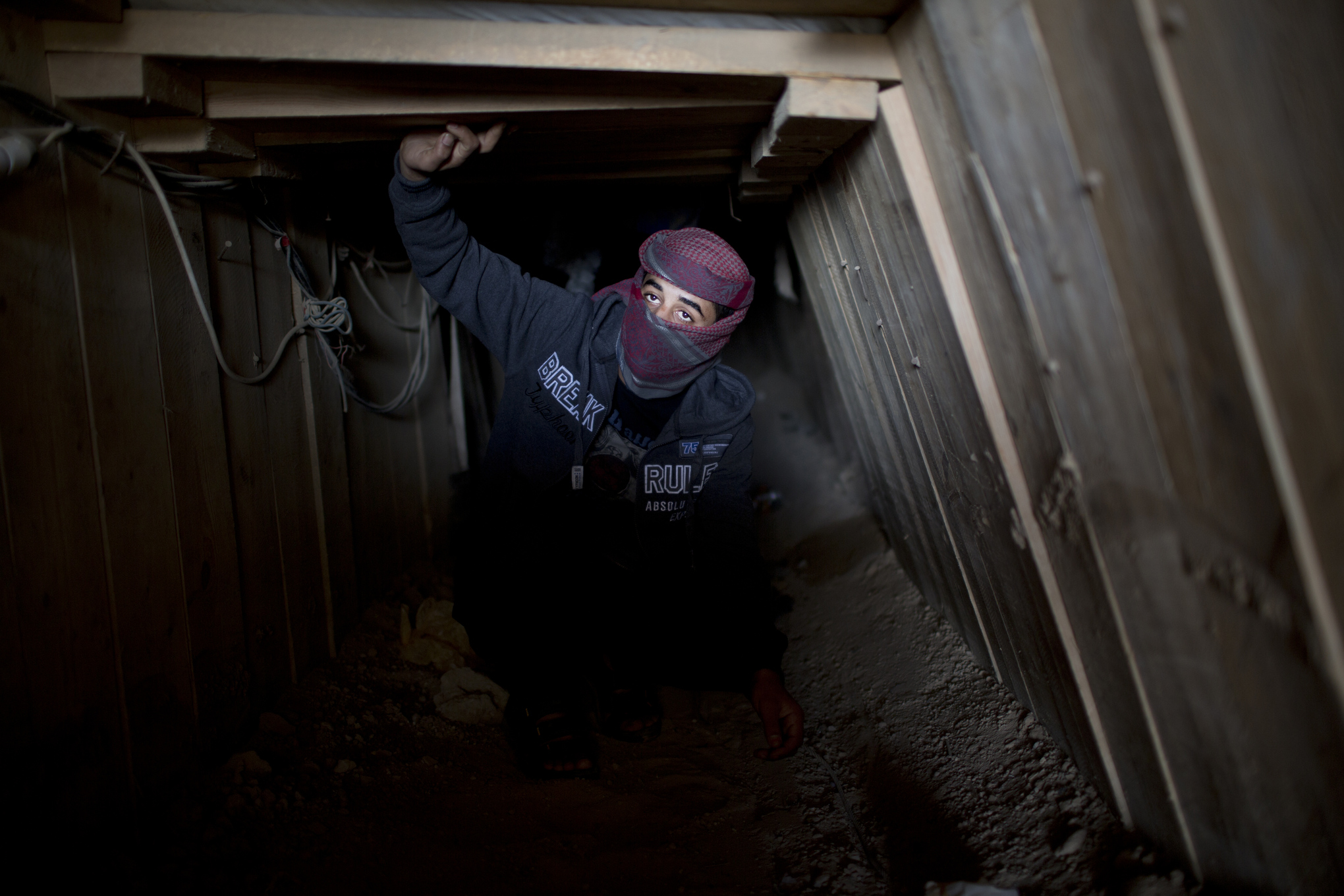
Mahmud Hams/AFP/Getty Images
Because Hamas can't get much through the Israeli blockade, they've
developed an alternative means of resupplying Gaza: tunnels into Egypt.
Gazans dig under the Egyptian border and pop out past border guards on
the other sides. Smugglers supply them with goods that Israel can't or
won't let through.
These tunnels serve both Hamas and Gaza civilians. Hamas and its
fellow militants use them to bring in weapons, components for homemade
rockets, and whatever else they need to fight and, in Hamas' case,
govern. Civilians bring in medicine, food, and whatever else they want
that doesn't get through the Israeli blockade.
Since the Egyptian military seized rule over Egypt from the Muslim
Brotherhood in 2013, they've weakened the tunnel system. Egyptian
authorities shut down many of the major tunnels. Israel believes that,
as a result, Hamas is uniquely vulnerable to an offensive right now, as
it's having trouble resupplying. One of the major reasons Israel is
considering a ground offensive, according to a senior IDF official, is to shut down the remaining tunnels.
11) Egypt controls the only above-ground crossing into Gaza that isn't Israeli
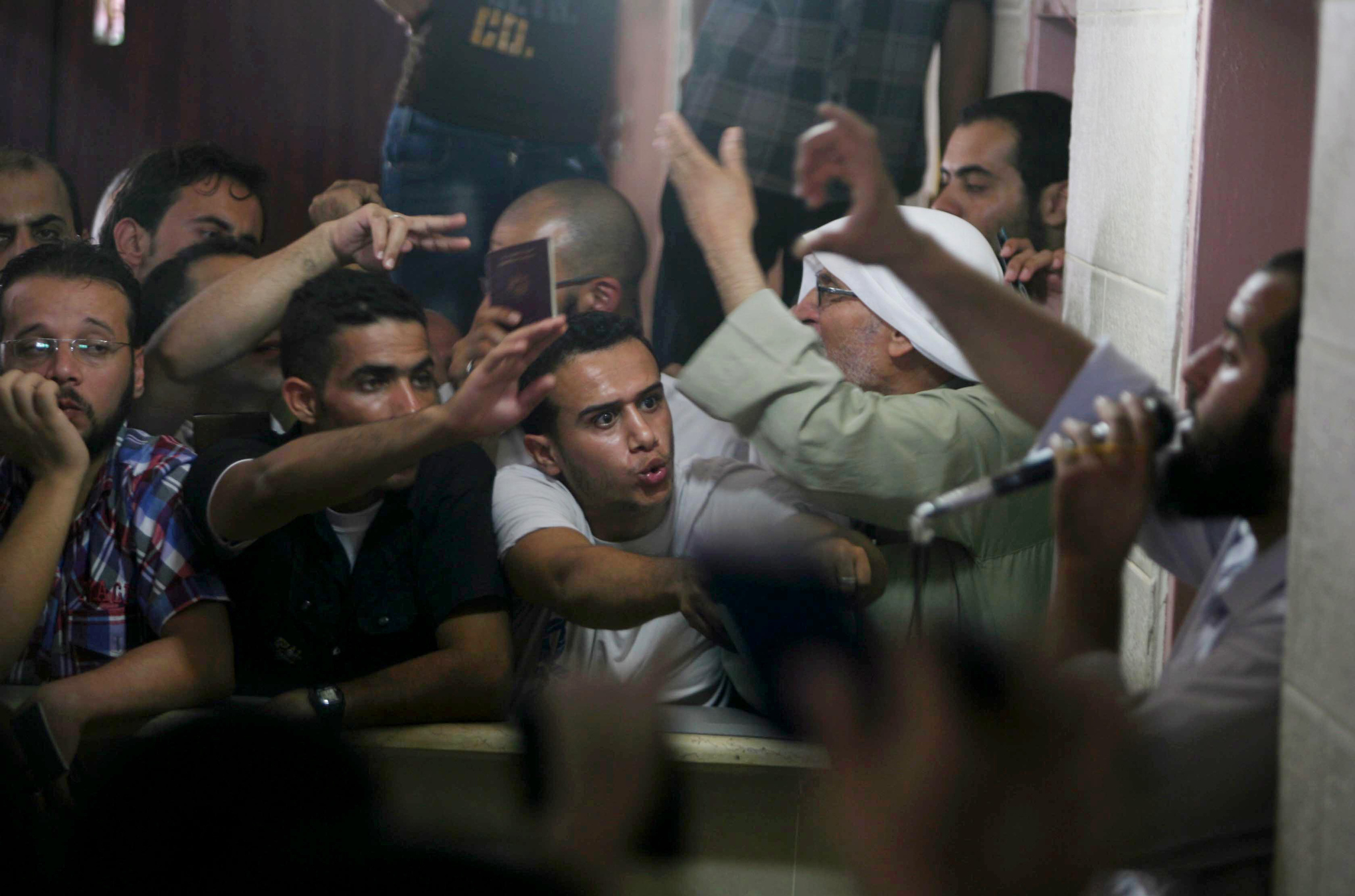
Rafah. Eyad Al Baba/Anadolu Agency/Getty Images
There's only one major supply route to Gaza that isn't a tunnel or
Israeli-controlled: the Rafah crossing into Egypt. Currently, Egypt
heavily restricts the flow of people and goods in and out of the
crossing. The Muslim Brotherhood is the leading Egyptian opposition
group, and the Egyptian government has little desire to help out their
Palestinian brethren in Hamas.
The Rafah crossing has become so important for Hamas that some experts believe Hamas is pushing in this current war to pressure Egypt to open up Rafah.
The theory
is that Hamas is trying to leverage public Egyptian anger at Israel
into concessions from the Egypt government. The primary concession would
be to open up Rafah so as to aid the Palestinian cause.
That may be why
Hamas didn't accept the Egyptian-brokered cease fire agreement,
proposed on July 15: it didn't specifically promise to open up Rafah
. So the conflict is continuing, with all the air strikes and rockets and civilian casualties that entails.
Correction: An earlier version of this post suggested there
was a bridge connecting Gaza and the West Bank. Various plans to do this
have been floated, but the bridge was never actually built.
